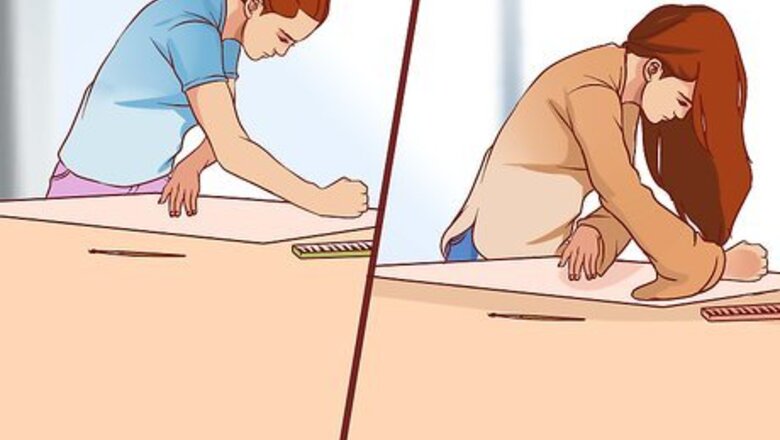
views
Being Practical
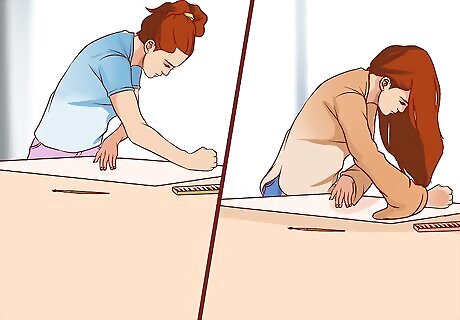
Wear comfortable clothing while you work. As an artist, you will be spending long hours honing your craft. Whether you're working at an easel or on a computer, you want to make sure you're as comfortable as possible. If you work with a messy medium like paint, avoid clothing that is too baggy, especially if it has sleeves. Even if you aren't worried about getting your work clothes dirty, too-loose clothing may end up smearing your work.
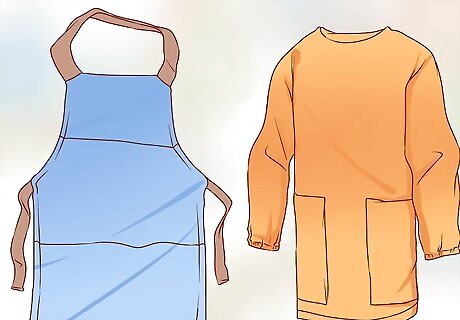
Protect your clothing. If you work with anything that can stain, such as paint or ink, you should take precautions to keep media away from your clothes. Cover up with an apron or a painting smock. Make sure it's made of a thick enough material that your media won't soak through quickly.
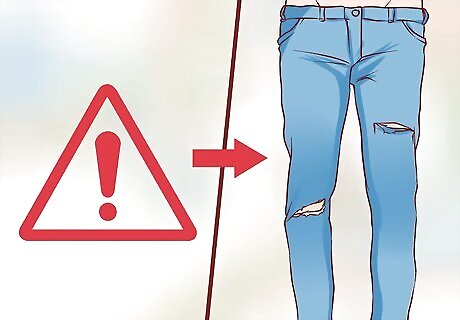
Avoid working in clothes that you mind ruining. Even with taking care and wearing an apron, you are likely to still get the odd splash of paint here or there. Washing immediately may take care of most media on various fabrics, but you are bound to get the occasional permanent stain. Don't wear your best slacks in the studio.
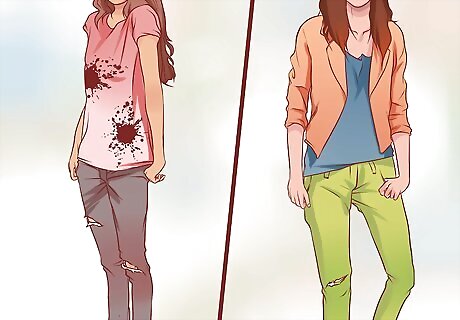
Work with what you have. As a young artist, you probably don't have a lot of money. Instead of pining for designer jeans way out of your price range, learn to build a stylish wardrobe without breaking the bank. Keep your clothes in good condition. Clothes that last longer will save you money. T-shirts and jeans may sound like a mundane combo, but you can use your own personal style to stand out. Wear T-shirts of your own design or that are otherwise unique. Wear jeans that are other colors besides the typical denim blue. A simple, creative way to stretch your wardrobe is to "mix and match" different pieces to create unique looks. Simply switching jackets between two suits will give you two "new" outfits.
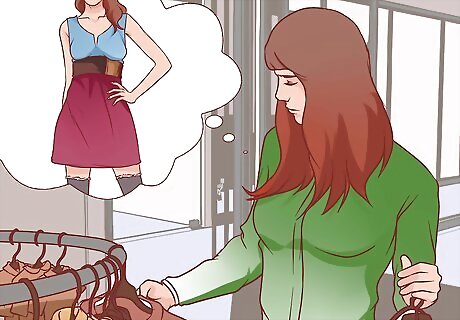
Shop at thrift stores. Second hand shops are the best way to stretch your clothing budget. In addition to basics and run-of-the-mill pieces, you'll be able to find unique styles at an affordable price. Look for quirky, odd "signature" pieces that fit your personality and will make you stand out. You can find retro and modern styles and then easily mix and match them. Most thrift shops have one or more glass cases in the front where they display nicer items, often jewelry. These items may be more expensive than typical thrift shop wares, but will still cost significantly less than retail. It's a great place to look for interesting pieces.
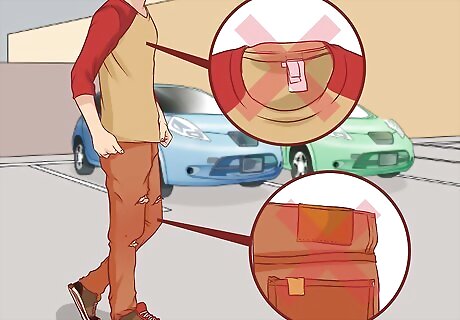
Stop paying attention to brands. While brand names sometimes mean quality, more often than not you end up paying for the name. As an artist, that's a luxury you are not likely to afford. Besides, how creative can you look when you're dressed just like everyone else? An exception is to remember which brands actually do make quality clothing that lasts. This type of brand may be a little more expensive but will save you money over time. Keep your eyes peeled for them when thrifting or browsing auction websites.
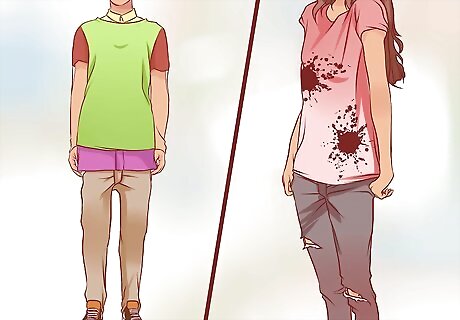
Do your own thing. Above all, to look like an artist you should dress how you want to. This could mean bright, attention-grabbing getup's that "push the boundaries." Or you may want to keep things casual and monochrome. You may even decide to do both on different days of the week. The choice is yours.
Getting Creative
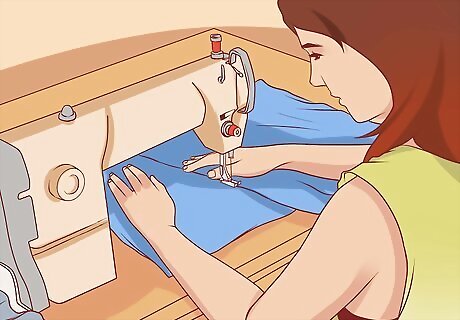
Sew your own clothes. You don't have to be a fashion designer to make your own clothing. Working from a pattern makes sewing your own wardrobe relatively simple. Check out your local fabric store for some wild, off-beat patterns you wouldn't find on store-bought clothes. As your skill-level increases, you may even decide to design pieces from scratch without an existing sewing pattern.
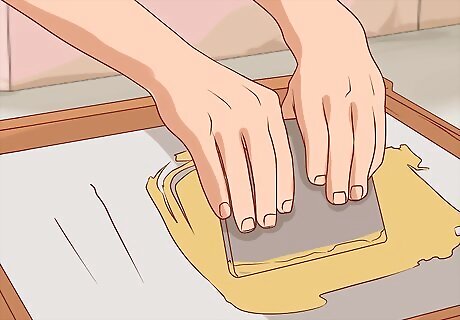
Screen print your own T-shirts. Are you tired of seeing the same old T-shirt designs? Make custom shirts that nobody else in the world can wear. If you have a business or studio, design T-shirts with its name and logo. If the shirts are eye-catching, wearing them can get complete strangers interested in your art. To make a simple T-shirt take a cotton or poly blend fabric with some stretch to it. Use an existing T-shirt as a guide to cut the shape, leaving an allowance of half-an-inch. Sew the shoulders and side seams. Then put a contrasting ribbed neckline.
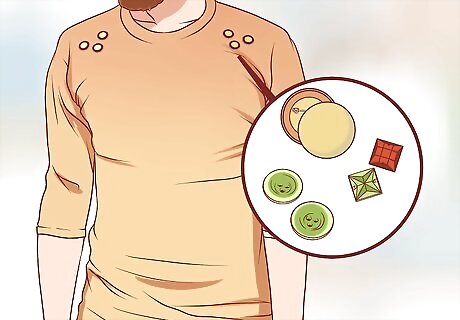
Create unique accessories. Find original buttons or add faux jewels to your clothes. Try your hand at basic jewelry crafts to make accessories that are both different and fit perfectly into your personal style. Upcycle any odd knickknack that can be incorporated into your clothes and accessories.
Dressing Like a Professional Artist
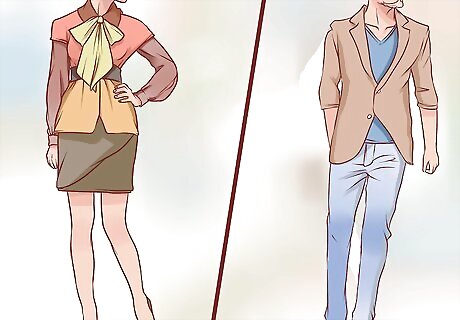
Wear uncommon but not outlandish colors. When attending semi-formal business and social events, you will want to look both creative and sophisticated. These are prime networking environments, and you never know who may want to buy an expensive piece or give you your next job. Look sharp while standing out with a dark green or brown suit or dress.
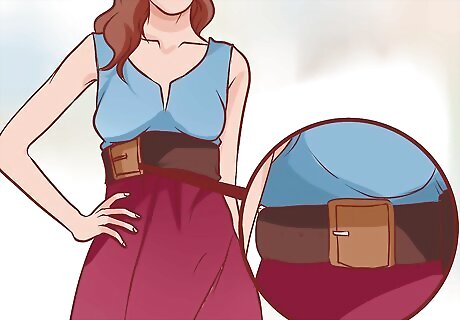
Add a belt. Belts enhance the style of any outfit they're worn with. When sporting an otherwise plain ensemble, a decorative belt and/or an interesting buckle can help you stand out from the crowd. Let others know more about your personal style and artistic interests with this small detail. Tooled leather is fairly uncommon in modern belts, and wearing a tooled leather belt is a simple way of looking unique. You can pick a belt buckle that holds some significance to either you or your art. For example, if your art frequently has an ocean theme, a buckle with a jellyfish or shark is a good choice. If you work with metal or leather, your belt is a great place to display your talents.
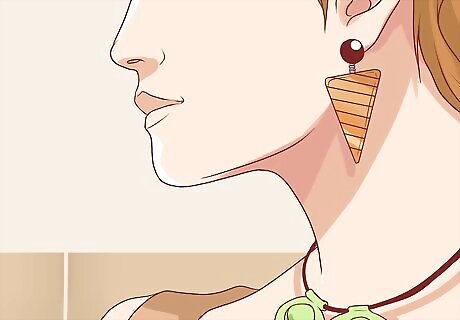
Look for unique jewelry that ties your look together. Look for pieces that are funky, foreign, expensive or well-made. Jewelry with intricate details or pieces that hearken back to the 80s are also good artistic choices. If a piece is particularly large or wild-looking, it may be best to save it for casual outfits, rather than wear it to something dressier like an art opening. Just like your belt buckle, your jewelry can reflect your interests and art. For example, if you're interested in astronomy and/or frequently incorporate spacescapes, try finding jewelry that features planets or supernovae. Avoid pieces that look too expensive or ostentatious, even if you didn't pay much for them. It may be harder to sell your work if a potential buyer sees you decked out in gold and diamonds.
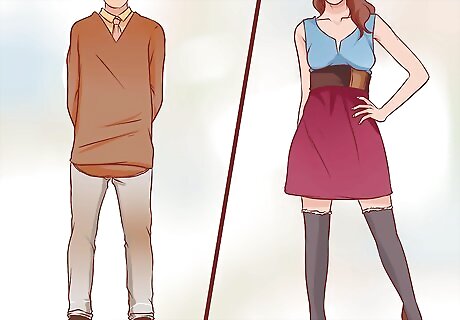
Dress down. Artists are famously known to dress more casually than average. However, you want to make sure you don't come off as sloppy or unstylish. If you don't take the time to put creativity into your outfit, some people may doubt the level of creativity you put into your art. Instead, dress down in a deliberate fashion rather than randomly throwing on jeans and a T-shirt. Make sure your clothing is clean and fits well.
Dressing Like a Stereotypical Artist
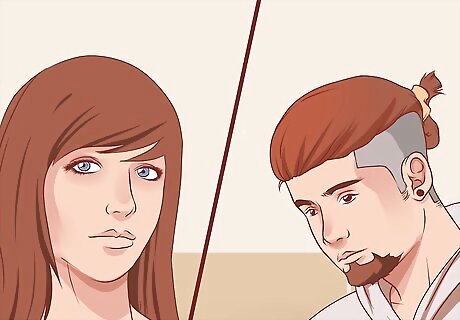
Change your hairstyle. Choose a look that will make you stand out in a crowd. Consider these ideas for creating a wild look: Get a blunt cut from your stylist and ask him or her to add bangs. Arrange your hair into dreadlocks if that works for your hair type. Dye or streak your hair with a unique color. If you're wary of making a major change to your hair color that you can't undo, then use a temporary dye. If your hair is braided or dreadlocked, one or two strands dyed a bright color will really pop. When adding a streak to your hair, having it closer to your face will have the biggest impact. Back comb or "tease" your hair with a brush and some hairspray to give it volume. While most people who tease their hair today hide the knots with unteased hair, a popular "artsy" look is to make your back combing look obvious. Stop straightening or curling your hair. Let it return to its natural state. Choose a style that defies gender stereotypes. If you're a girl, go with extremely short hair. If you're a guy, grow your hair long.
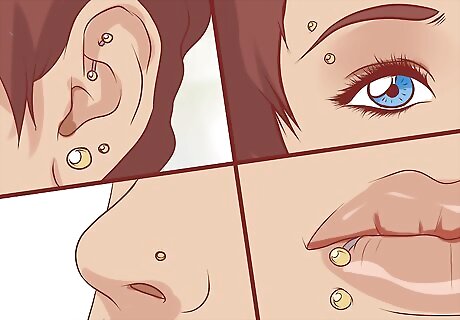
Get piercings. You can pierce your eyebrow, your lip or your nose for dramatic effect. Gauged earlobes are another popular piercing choice. Just remember that, unlike most other types of piercings, earlobe stretching is likely to be permanent. If you want something more subtle, pierce your ear cartilage.
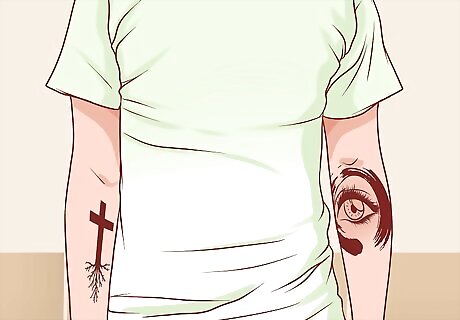
Consider tattoos. Tattoos themselves are an art form, and having a few may show off your creative side. If you consider your body a canvas, you might want to get tattooed in a way you find meaningful. Don't be thoughtless about it, though; you don't want to get a tattoo you'll regret. If you are a visual artist, consider drawing your own design for your tattoo artist to use. The modern artist stereotype often includes full sleeves and/or neck tattoos. If you don't want to commit to the artist look for life, try temporary tattoos instead.

Stop shaving. You may want to grow out your facial hair or change your other shaving habits. Do what you want, and don't conform to social pressure. Shaving is a personal choice. Some artists shave, and some don't. However, the popular image of an artist usually has a beard or at least some stubble.
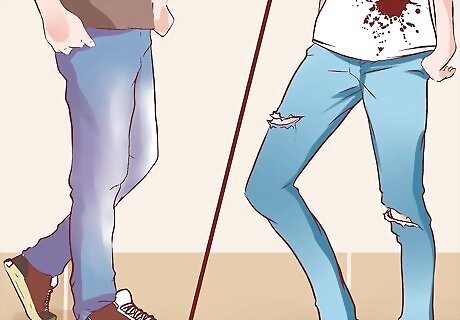
Wear stylish jeans. While skinny jeans may be the fashion, remember that as an artist you want to set yourself apart from the crowd. Your jeans can also be ripped and faded. However, artsy guys should never wear ill-fitting or ruined dress pants.
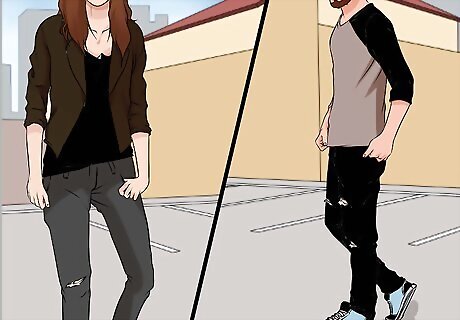
Wear a lot of black. Artists dressing all in black is a stereotype for good reason. In addition to flattering any figure, black also shows dirt and stains much less compared with other colors. When you're an artist with a limited budget, black clothes will save you cleaning and replacement costs. Artists also often wear black to events where they showcase their art. The monochromatic look draws attention away from them and onto their work.
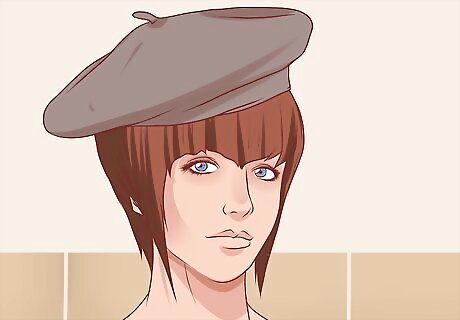
Wear a beret. A black beret is the ultimate artist fashion cliché. Fortunately, it also happens to be stylish. Berets look good on both guys and girls and can be worn a variety of ways. Get one for yourself to really sell the artistic look you're going for.



















Comments
0 comment